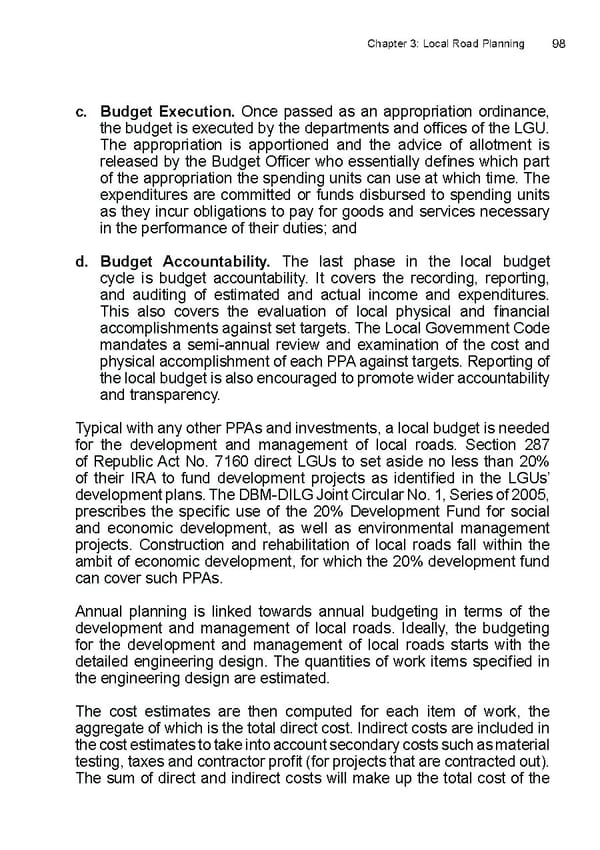Chapter 3: Local Road Planning 98 c. Budget Execution. Once passed as an appropriation ordinance, the budget is executed by the departments and oiffces of the LGU. The appropriation is apportioned and the advice of allotment is released by the Budget Oiffcer who essentially deifnes which part of the appropriation the spending units can use at which time. The expenditures are committed or funds disbursed to spending units as they incur obligations to pay for goods and services necessary in the performance of their duties; and d. Budget Accountability. The last phase in the local budget cycle is budget accountability. It covers the recording, reporting, and auditing of estimated and actual income and expenditures. This also covers the evaluation of local physical and ifnancial accomplishments against set targets. The Local Government Code mandates a semi-annual review and examination of the cost and physical accomplishment of each PPA against targets. Reporting of the local budget is also encouraged to promote wider accountability and transparency. Typical with any other PPAs and investments, a local budget is needed for the development and management of local roads. Section 287 of Republic Act No. 7160 direct LGUs to set aside no less than 20% of their IRA to fund development projects as identiifed in the LGUs’ development plans. The DBM-DILG Joint Circular No. 1, Series of 2005, prescribes the speciifc use of the 20% Development Fund for social and economic development, as well as environmental management projects. Construction and rehabilitation of local roads fall within the ambit of economic development, for which the 20% development fund can cover such PPAs. Annual planning is linked towards annual budgeting in terms of the development and management of local roads. Ideally, the budgeting for the development and management of local roads starts with the detailed engineering design. The quantities of work items speciifed in the engineering design are estimated. The cost estimates are then computed for each item of work, the aggregate of which is the total direct cost. Indirect costs are included in the cost estimates to take into account secondary costs such as material testing, taxes and contractor proift (for projects that are contracted out). The sum of direct and indirect costs will make up the total cost of the
 LRM Manual CMGP Page 97 Page 99
LRM Manual CMGP Page 97 Page 99